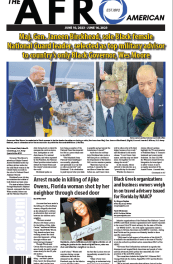

In the 2017-2018 school year, Black students made up less than 10%, nationwide, of students who were enrolled in advanced placement classes. Two of the major barriers found were educator bias and a lack of communication with families. (Photograph by RF._.studio/Pexel)
By Maya Pottiger
Word In Black
Nationwide, 6% of students were enrolled in Advanced Placement (AP) classes in the 2017-2018 school year, according to an analysis of data from the U.S. Department of Education’s Civil Rights Data Collection. The number of Black and Hispanic students enrolled were both below the national average, with only 3.7% of Black students and 5.1% of Hispanic students enrolled in AP classes.
However, the number of Asian and White students enrolled in AP classes were both above the national average. In that same school year, 6.6% of White students were taking AP classes, and 12.9% of Asian students, or more than twice the national average, were enrolled.
“Advanced coursework opportunities can place students on the path toward college and career success. Yet, too many Black and Latino students never receive the opportunity to enroll through no fault of their own,” said Kayla Patrick, a data and policy analyst at Ed Trust who authored a report on inequities in advanced coursework. “No student should forfeit future success because there were not enough seats in the class or because the seats were not available.”
In her report, Patrick cited many barriers to entry: funding gaps in school districts, “inequitable access” in the quality of early childhood education opportunities, a lack of access to diverse educators, and biases in assessment and grading practices. Two of the major barriers Patrick found were educator bias and a lack of communication with families.
“These missed opportunities are a result of structural inequalities, personal bias and deficit perspectives that are commonly held about black and brown children,” Vanessa Dodo Seriki, co-director of the Center for Innovation in Urban Education at Loyola University Maryland, told the Baltimore Sun.

Of course, some states are more equitable than others. In Michigan and Missouri, White students accounted for nearly 80% of enrollment in AP classes, while Hispanic and Asian students were each fewer than 10%. Black students made up 7% of AP enrollment in Michigan and 12% in Missouri.
However, in Georgia and Maryland, the distribution was slightly more even. While White students made up half of AP enrollment, Black students accounted for roughly 25%, with Hispanic and Asian students each coming in at about 12%.
In Washington, D.C., Black students, who made up 68% of the school population, accounted for 60% of AP enrollment. White students made up 15%.
A 2016 study of 4,000 teachers and 6,000 students across the country found that a “student-teacher racial mismatch” results in the teacher having much lower expectations for how a Black student performs.

This is one one of the most important barriers of entry to overcome.
“If you identify as Black, if you identify as Brown, if your family doesn’t make a whole lot of money, then it is even more important that you engage in these courses,” Marcy Leonard, the principal of Hammond High School, told an auditorium full of students, according to the Baltimore Sun. “Because there are people who look like me who are going to think that you can’t, and it is really important that you know that you can.”
Help us Continue to tell OUR Story and join the AFRO family as a member – subscribers are now members! Join here!
The post #WordInBlack: Black students made up smallest percentage of enrollment in advanced placement classes appeared first on AFRO American Newspapers .











